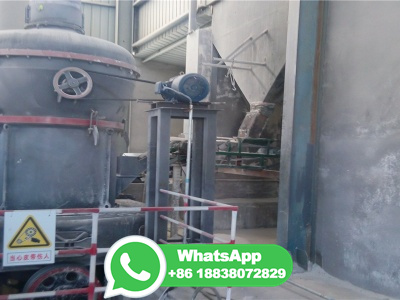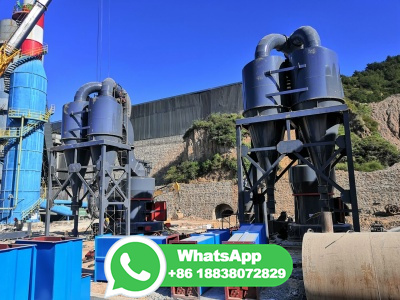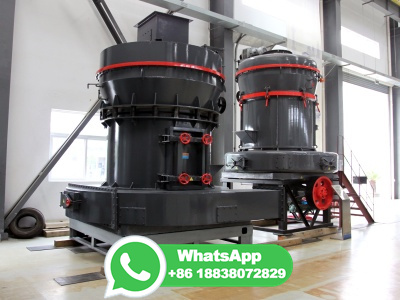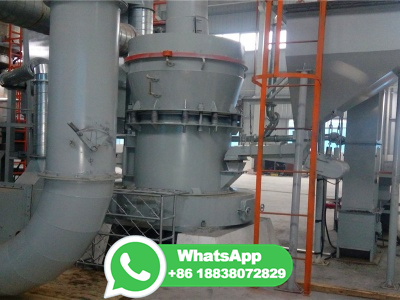particle size and grading artificial aggregate
Simply complete the form below, click submit, you will get the price list and a GBMachine representative will contact you within one business day. Please also feel free to contact us by email or phone. ( * Denotes a required field).

Classification of Aggregates Based on Size
The size of the aggregate bigger than mm is considered as the coarse aggregate basically, all other aggregates which are retained on IS sieve while sieve analysis is performed. According to sources of coarse aggregates, it can be further classified as: (a) Uncrushed Gravel or Stone: It results from natural disintegration of rock.
Get Price
Importance of Aggregate Gradation of concrete slab
The terminology used to specify size of coarse aggregate must be chosen carefully. Particle size is determined by size of sieve and applies to the aggregate passing that sieve and not passing the next smaller sieve. When speaking of an assortment of particle sizes, the size number (or grading size) of the gradation is used.
Get Price
grading optimization of aggregates for concrete
In this way, the resulting concrete mass is a voidless or dense mass. The binding property of cement is made use of to give this dense mass a cohesive stonelike character. Concrete is, an artificial stone, in a broad sense. Grading of aggregates is aimed at determining the mean size of the particle in a given batch of aggregates. Get Price
Effects of Aggregate Size, Shape, and Surface Texture on ...
face area is a function of aggregate size and size range. The larger the aggregate size, the smaller is the surface area for a given weight or volume of aggregate. In densegraded aggregates, the major portion of the surface area occurs in the fine aggregate fraction. These principles are generally accepted in the design procedures
Get Price
>
Title: : SYSTEM Created Date: 6/8/2012 2:22:50 AM
Get Price
Evaluation of particle size distribution of granular ...
The particle size distribution of a granular material is commonly expressed by its particle grading curve and the related characteristic parameters of uniformity coefficient Cu and curvature coefficient Cc. 7 At present, the evaluation of particle size distribution is mainly based on engineering experience; however, a series of problems arise ...
Get Price
The Effect of Aggregate Properties on Concrete
The grading or size distribution of aggregate is an important characteristic because it determines the paste requirement for workable concrete. This paste requirement is the factor controlling the cost, since cement is the most expensive component. It is therefore desirable to minimize the amount of paste consistent with the production of ...
Get Price
Chapter Two Aggregate Types and Material Selection ...
For example, 32 agencies limit the maxi mum aggregate particle size for densegraded base courses to or in. Similarly, 20 agencies limit the maximum aggregate particle size in densegraded subbase layers to between and in.
Get Price
Grading Requirements of Fine Aggregates Iamcivilengineer
Sep 21, 2019· The grading also known as sieve analysis is simply an exploration of particle size distribution and represented as % passing from each sieve. Therefore, to examine the grading of fine aggregates, the common procedure of sieve analysis shall be adopted by using the set of sieves as mentioned in the section of grading requirements table.
Get Price
Sieve Analysis of Fine Aggregates || Procedure and Test ...
Sep 17, 2019· All Aggregates pass IS mm sieve is classified as fine Aggregates. All aggregate technicians use the sieve analysis (gradation test) to determines the gradation (the particle size distribution, by size, within a given sample) in order to determine compliance with design, production control requirements, and verification specifications.
Get Price
Grain Size Analysis of Fine Aggregates Particle Size ...
Procedure of Grain Size Analysis of Aggregates For Fine Aggregates. Take one kg of sand from the laboratory sample; Arrange the sieves in order of IS sieves no''s 480, 240, 120, 60, 30 and 15, Keeping sieve at the top and 15 at the bottom and cover the top.
Get Price
Maximum Aggregate Size Nominal Maximum Aggregate Size
Jan 24, 2013· By the CT 382 definition, the maximum aggregate size is 3/4" and the nominal maximum aggregate size is 1/2". In the November 2011 version of CT 202, nominal maximum aggregate size is defined as "one sieve size larger than the first size to retain more than 10%." By this definition the nominal maximum aggregate size for the material example ...
Get Price
A Study on Influence of Shape of Aggregate on Strength and ...
Aggregate characteristics of shape, texture and grading influence on workability, finishability, bleeding, pumpability and segregation of fresh concrete and affects the strength, shrinkage, density, and durability of hardened concrete. About 80% of total volume of concrete consists of aggregate. Construction and durability problems have been reported due to poor mixture proportioning and ...
Get Price
Fine Aggregate: Definition, Size, Density and Properties ...
Fine aggregate is the essential ingredient in concrete that consists of natural sand or crushed stone. The quality and fine aggregate density strongly influence the hardened properties of the concrete.. The concrete or mortar mixture can be made more durable, stronger and cheaper if you made the selection of fine aggregate on basis of grading zone, particle shape and surface texture, abrasion ...
Get Price
Blog Single Serenity Bootstrap Template
Grading of aggregate is the particle size distribution, which is determined by sieve analysis. The particle size distribution of a mass should be such that, voids between the coarse aggregate should be filled by fine aggregates. The grading of the aggregate affects the workability of concrete. When grading of aggregate is done by sieve analysis.
Get Price
Grain Size Analysis of Fine Aggregates Particle Size ...
Procedure of Grain Size Analysis of Aggregates For Fine Aggregates. Take one kg of sand from the laboratory sample; Arrange the sieves in order of IS sieves no''s 480, 240, 120, 60, 30 and 15, Keeping sieve at the top and 15 at the bottom and cover the top.
Get Price
Online Sieve Analysis of Aggregates, Gradation test ...
A sieve analysis (or gradation test) is a practice or procedure used to assess the particle size distribution (also called gradation) of a granular material by allowing the material to pass through a series of sieves of progressively smaller mesh size and weighing the amount of material that is stopped by each sieve as a fraction of the whole mass.
Get Price
Coarse Aggregate Level 1 Technician Recertification
Section 2 Particle Size, Shape and Texture Section 3 Specific Gravity, Absorption and Unit Weight Section 4 Hardness, Soundness and Strength Section 5 Deleterious Materials Section 6 Aggregate Applications Section 7 QC Plans and SCDOT Specifications Section 8 Sampling and Grading Appendix 1 SCDOT Aggregate QC/QA Policy
Get Price
EFFECTS OF AGGREGATE TYPE, SIZE, AND CONTENT ON .
increase in aggregate size results in a decrease in the compressive strength of concrete. Cook (1989) showed that, for compressive strengths in excess of 69 MPa (10,000 psi), smaller sized coarse aggregate produces higher strengths for a given watertocement ratio. In fact, it is generally agreed that, although larger coarse aggregates can be used
Get Price
Gradation of Coarse Aggregates
This particle size distribution of the coarse aggregates is termed as "Gradation". The sieve analysis is conducted to determine this particle size distribution. Grading pattern is assessed by sieving a sample successively through all the sieves mounted one over the other in order of size.
Get Price
Classification of Aggregates Based on Size and Shape ...
Aggregates are available in nature in different sizes. The size of aggregate used may be related to the mix proportions, type of work etc. the size distribution of aggregates is called grading of aggregates. Following are the classification of aggregates based on size: Aggregates are classified into 2 types according to size. Fine aggregate
Get Price
QUALITY OF AGGREGATE FOR ASPHALT CONCRETE | CIVIL .
Dec 24, 2016· The maximum size of an aggregate designates the smallest sieve size through which 100 percent of the material will pass. Grading of an aggregate is determined by sieve analysis. Maximum size and grading are invariably controlled by specifications that prescribe the distribution of particle sizes to be used for a particular aggregate material ...
Get Price
ASTM C 136 : 2006 | Standard Test Method for Sieve ...
This test method covers the determination of the particle size distribution of fine and coarse aggregates by sieving. Some specifications for aggregates which reference this test method contain grading requirements including both coarse and fine fractions. Instructions are included for sieve analysis of such aggregates.
Get Price
grading of aggregate for concrete miand
aggregate content is usually 35% to 45% by mass or volume of the total aggregate content CHARACTERISTICS OF AGGREGATES The important characteristics of aggregates for concrete are listed in Table 52 and most are discussed in the following section: Grading Grading is the particlesize distribution of an aggregate as.
Get Price
14. AGGREGATES
coarse aggregate designation given to the larger aggregate sizes with D greater than or equal to 4 mm and d greater than or equal to 2 mm fines particle size fraction of an aggregate which passes the 0,063 mm sieve grading particle size distribution expressed as the percentages by mass passing a .
Get Price
Aggregates for Concrete
—Maximum size and nominal maximum size —Significance of aggregate grading —Permissible variations in grading —Specific gravity (relative density) ... Aggregates may be broadly classi fied as natural or artificial, ... distribution of particle sizes present in an aggregate. The grading is determined in accordance with ...
Get Price
Sizes and Grading of Aggregates for Road Maintenance and ...
filled with lj^inch or larger top size aggregate, like No. 63, No. 53, No. 4, or No. 2. Many thin patches will not accommodate over a size No. 11, which is a j4inch top size aggregate. For thicker repairs, however, larger aggregate is better due to the added strength. Aggre
Get Price
Exp 3 Sieve Analysis Civil Engineers PK
This test method covers the determination of the particle size distribution of fine and coarse aggregates by sieving. This test method is used to determine the grading of materials proposed for use as aggregates or being used as aggregates. Sieve Analysis
Get Price

